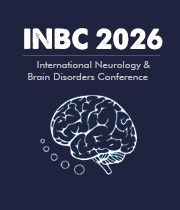HYBRID EVENT: You can participate in person at Boston, Massachusetts, USA or Virtually from your home or work.
Human Brain Mapping
Human Brain Mapping
Brain mapping is the study of the anatomy and function of the brain and spinal cord through the use of imaging (including intra-operative, microscopic, endoscopic and multi-modality imaging), immunohistochemistry, molecular & optogenetics, stem cell and cellular biologyIt is a set of neuroscience techniques predicated on the mapping of (biological) quantities or properties onto spatial representations of the (human or non-human) brain resulting in maps.
- Regional cerebral blood flow (rCBF)
- Regional metabolic rate of glucose (rCMRglc)
- Near infrared spectroscopy (NIRS)
- Electroencephalography (EEG)
- Magnetoencephalography (MEG)
Committee Members

Joe Sam Robinson
Mercer University, United States
Robert B Slocum
University of Kentucky HealthCare, United States
George Diaz
Memorial Healthcare Systems, United States INBC 2026 Speakers

Daniel Curry
Texas Children’s Hospital, United States
Zhenhuan Liu
Guangzhou University Chinese Medicine, China
Kiran Ghotra
Lake Erie College of Osteopathic Medicine, United States




Title : Atypical presentation of Juvenile myoclonic epilepsy in a 16-year-old female: A Case Report
George Diaz, Memorial Healthcare Systems, United States
Title : What we don’t know about hydrocephalus and It’s management
Daniel Curry, Texas Children’s Hospital, United States
Title : Artificial intelligence-driven DWI and FLAIR for the detection of early stroke changes: A systematic review
Shari L Guerra, The Medical City, Philippines
Title : Mapping neuroplasticity in occupational therapy: Evidence-based interventions with measurable neural outcomes
Jessica Marchant, Texas Woman's University, United States
Title : Non-pharmacologic management of orthostatic hypotension in inpatient rehabilitation: A quality improvement initiative
Laura Steakin, Rehabilitation Institute at Sinai, United States
Title : Non-pharmacologic management of orthostatic hypotension in inpatient rehabilitation: A quality improvement initiative
Mackenzie Weber, Rehabilitation Institute at Sinai, United States